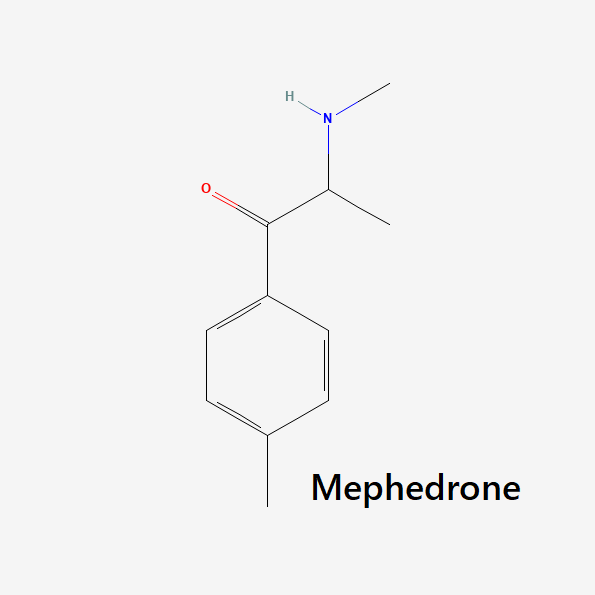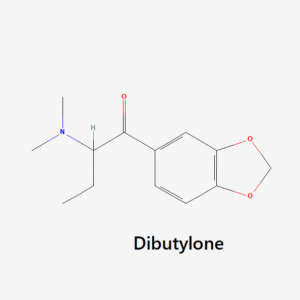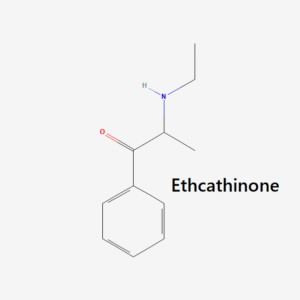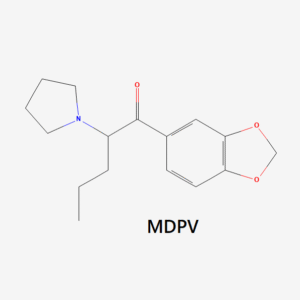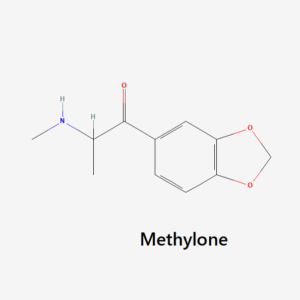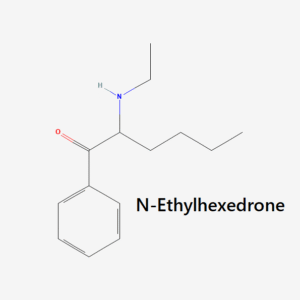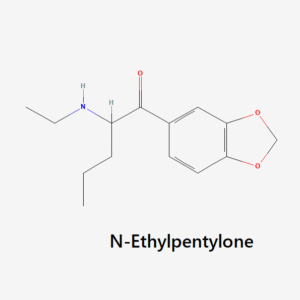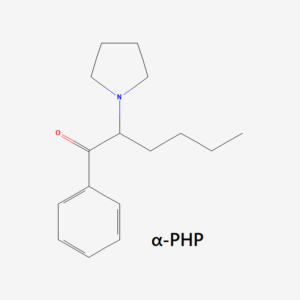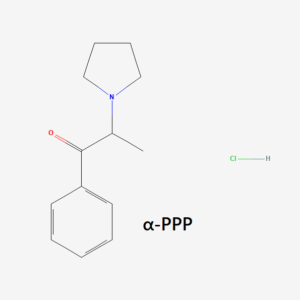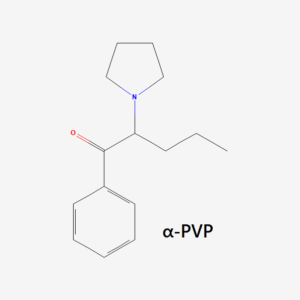Cathinones
Explore (−)-(S)- Cathinone and Cathine Hydrochloride like α-Pyrrolidinophenone
From trusted research chemical online shop. Cathinone and cathine are naturally occurring alkaloids found in the khat plant (Catha edulis). Traditionally chewed in parts of Africa and the Middle East, these compounds are known for their stimulant properties. While cathinone is the more potent of the two, cathine is considered milder, producing alertness and energy without the same intensity.
Chemical Structure and Pharmacology
Both cathinone and cathine belong to the broader class of phenethylamines, which are structurally related to amphetamines. Cathinone is a beta-keto analogue of amphetamine, while cathine is a less potent derivative. Their structural similarity explains why they share stimulating effects, though with distinct pharmacological profiles.
Cathinone Hydrochloride
Cathinone hydrochloride is the stable, salt-based form of cathinone that makes it suitable for laboratory and research use. In this form, cathinone is easier to handle, measure, and store, ensuring accuracy in controlled experiments.
Synthetic Cathinones
Synthetic cathinones are man-made derivatives of naturally occurring cathinone. Often referred to as “bath salts” in the media, they form a large and diverse group of compounds designed to mimic or alter the stimulant effects of cathinone.
Substituted Cathinones
Substituted cathinones are cathinone derivatives that have been chemically modified at specific positions on the molecule. These substitutions can dramatically change how the compound behaves in the body.
Examples of Substituted Cathinones
Mephedrone
One of the most widely studied substituted cathinones, mephedrone is known for producing stimulant and empathogenic effects similar to MDMA.
Methylone
Another example, methylone, shows entactogenic properties and has been researched for its similarities to both cathinone and MDMA.
Other Analogues
Beyond these, countless substituted cathinones have been synthesized for research purposes, each offering a unique chemical profile.
Cathinones in Modern Research and Applications; Neuroscience and Pharmacological Studies
Cathinones continue to draw interest in neuroscience research, particularly in understanding reward pathways and addiction mechanisms. Their ability to alter neurotransmitter release makes them valuable tools in studying brain chemistry.
Understanding Pyrrolidinophenone PVP
Pyrrolidinophenone PVP is a synthetic cathinone with stimulant properties, often studied for its effects on the central nervous system. Researchers examine this compound to understand its pharmacological activity, receptor interactions, and metabolic pathways. By studying pyrrolidinophenone PVP, scientists gain insight into how structural modifications influence potency, duration of action, and behavioral outcomes. Controlled research provides critical information on dosage parameters, toxicity, and safety profiles, enabling laboratories to explore alpha-pyrrolidinophenone in a responsible and scientifically rigorous manner.
Pharmacological Profile of Alpha-Pyrrolidinophenone
Alpha-pyrrolidinophenone is a synthetic cathinone that functions primarily as a potent stimulant by inhibiting the reuptake of dopamine, norepinephrine, and to a lesser extent, serotonin. Its interaction with monoamine transporters leads to increased neurotransmitter levels in the synaptic cleft, producing heightened alertness, energy, and mood alterations. Researchers investigate these pharmacological mechanisms to understand dose-response relationships, potential adverse effects, and comparative efficacy relative to other cathinones. Studying alpha-pyrrolidinophenone is essential for toxicology research, behavioral pharmacology, and experimental neurochemistry.
Research on Pyrrolidinophenone PVP
Laboratories focus on pyrrolidinophenone PVP for experimental studies on stimulant effects, neurotoxicity, and behavioral pharmacology. Research includes evaluating locomotor activity, cognitive function, and neurological impact in preclinical models. Pyrrolidinophenone PVP serves as a reference compound for studying substituted cathinones and other synthetic stimulants. Researchers analyze metabolism, receptor affinity, and neurochemical alterations to understand mechanisms of action, potential therapeutic insights, and safety considerations. Comparative studies with related compounds help establish structural-activity relationships and inform experimental design for future studies. The stimulant activity of pyrrolidinophenone PVP stems from its ability to enhance synaptic concentrations of dopamine and norepinephrine, which modulate alertness, motivation, and reward pathways. By studying these mechanisms, researchers can understand how subtle structural variations affect potency, duration, and side effect profiles. Investigating the neurochemical interactions of alpha-pyrrolidinophenone helps elucidate risks, potential neurotoxicity, and implications for behavioral pharmacology research. These mechanistic studies are critical for designing safer analogues and expanding scientific understanding of synthetic cathinones. Comparative research on pyrrolidinophenone PVP examines differences in potency, receptor binding, metabolism, and behavioral outcomes relative to other synthetic cathinones. Such studies help clarify the impact of structural modifications on stimulant properties and toxicity profiles. Comparative analysis also supports the development of predictive models for new derivatives, guiding experimental design and informing risk assessment. By systematically studying alpha-pyrrolidinophenone in relation to other pyrrolidinophenones, researchers can refine hypotheses, improve experimental reproducibility, and enhance understanding of synthetic stimulant pharmacology.
Future on Alpha-Pyrrolidinophenone Research
Ongoing research into alpha-pyrrolidinophenone focuses on exploring structure-activity relationships, optimizing safety, and evaluating potential experimental applications. Advances in analytical chemistry, neuropharmacology, and receptor mapping provide greater insight into stimulant mechanisms and behavioral effects. Controlled studies with pyrrolidinophenone PVP continue to inform toxicology, pharmacokinetics, and laboratory safety standards. Future research may also contribute to the design of safer analogues for experimental use and support regulatory and forensic investigations into synthetic cathinones.
Advancing Knowledge on Cathinone and Alpha-Pyrrolidinophenone Research
From the naturally occurring cathinone and cathine in khat to laboratory forms like cathinone hydrochloride, and from the growing field of synthetic cathinones to the diversity of substituted cathinones, these compounds offer valuable insight into neurochemistry, pharmacology, and forensic science.
And from studying pyrrolidinophenone PVP to investigating alpha-pyrrolidinophenone mechanisms, these compounds are vital for advancing pharmacology, neurochemistry, and behavioral research. Reliable access to high-quality, laboratory-grade materials ensures reproducible results, safety, and scientific progress.
Showing all 10 results
-
Cathinones
4-MMC
-
Cathinones
Dibutylone
-
Cathinones
Ethcathinone
-
Cathinones
MDPV
-
Cathinones
Methylone
-
Cathinones
N-Ethylhexedrone
-
Cathinones
N-Ethylpentylone
-
Cathinones
α-PHP
-
Cathinones
α-PPP
-
Cathinones
α-PVP
